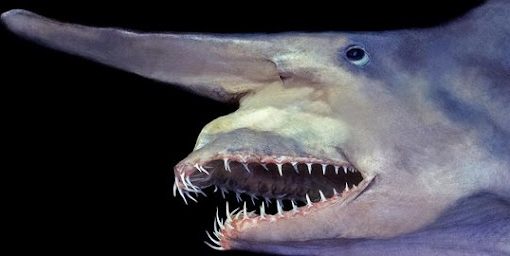D’Orbigny’s Slider: A Fascinating Turtle Species of South America

The D’Orbigny’s slider, scientifically known as Trachemys dorbigni, is a species of freshwater turtle native to South America. This species is part of the family Emydidae, which includes other well-known turtle species such as the red-eared slider (Trachemys scripta elegans) and the yellow-bellied slider (Trachemys scripta scripta). The D’Orbigny’s slider is named in honor of the French naturalist Charles D’Orbigny, who contributed significantly to the study of South American fauna during the 19th century.
This species is commonly found in various freshwater habitats, including rivers, lakes, and marshes, throughout South America. Known for its striking appearance and interesting behavior, the D’Orbigny’s slider has captured the attention of both scientific researchers and nature enthusiasts. In this article, we will explore the key characteristics, habitat, behavior, and conservation efforts related to the D’Orbigny’s slider, as well as the threats it faces in the wild.
Description and Physical Characteristics

The D’Orbigny’s slider is a medium-sized freshwater turtle that exhibits various distinctive physical traits. Adult individuals typically have a carapace (upper shell) length ranging from 20 to 30 cm, with males being slightly smaller than females. The carapace is typically dark green or olive in color, with some individuals exhibiting a more brownish hue. The shell is smooth, moderately domed, and has a well-defined pattern of dark markings, giving it an attractive appearance. Unlike some other species of turtles, the D’Orbigny’s slider does not have prominent ridges or keels on its carapace, which gives it a more streamlined look indratogel.
One of the most striking features of the D’Orbigny’s slider is its head, which is often characterized by a bright yellow or orange stripe running along the sides of the face. This coloration contrasts beautifully with the darker hues of the rest of the body. The D’Orbigny’s slider also has large, round eyes that are typically dark, further enhancing its expressive appearance.
The limbs of the D’Orbigny’s slider are well-adapted for swimming. The front limbs are equipped with long, webbed digits that help the turtle paddle through the water. Its strong and muscular legs enable the slider to move efficiently both in the water and on land. The hind limbs are more powerful and are used for propulsion when swimming, allowing the turtle to cover long distances with ease.
Additionally, the D’Orbigny’s slider has a relatively long tail, which, while not as pronounced as that of some other turtle species, helps with balance and movement in the water. The belly of the turtle is typically light yellow or cream-colored, providing a striking contrast with the darker upper body.
Habitat and Distribution
The D’Orbigny’s slider is found in a variety of freshwater habitats across South America, particularly in the countries of Argentina, Brazil, and Paraguay. It thrives in slow-moving rivers, lakes, marshes, and wetlands, where it can easily access both land and water. The species is commonly found in areas with abundant aquatic vegetation, which provides cover and a source of food. These turtles often bask on rocks, logs, or floating vegetation, soaking up the sun to regulate their body temperature.
Due to its preference for freshwater ecosystems, the D’Orbigny’s slider is generally not found in brackish or saltwater environments. In addition to shallow water bodies, it is often seen in larger rivers with calm sections and low current. The turtles are highly adaptable and can thrive in a range of temperatures, though they are typically found in areas with moderate to warm climates.
The D’Orbigny’s slider is known to have a relatively wide range across its native regions. However, its population is not uniformly distributed, with certain areas experiencing more concentrated turtle populations than others. The species’ preference for certain freshwater ecosystems means that habitat destruction and pollution can have significant impacts on their numbers in specific regions.
Behavior and Diet
D’Orbigny’s sliders are primarily diurnal creatures, meaning they are active during the day. They spend much of their time basking in the sun on logs, rocks, or other available surfaces near the water. This behavior is crucial for regulating their body temperature, as reptiles are ectothermic (cold-blooded) and rely on external heat sources to maintain their metabolic processes. Basking also provides the turtles with an opportunity to dry out their shells and skin, preventing the buildup of harmful bacteria or fungi.
In addition to basking, the D’Orbigny’s slider is an excellent swimmer and spends a significant amount of time in the water. They are highly proficient at diving and can remain submerged for extended periods when foraging for food. The species is considered semi-aquatic, as it requires both land and water environments for different activities, such as feeding, nesting, and seeking refuge.
As for their diet, D’Orbigny’s sliders are omnivorous, consuming a wide variety of plant and animal matter. Their diet typically consists of aquatic plants, algae, insects, small fish, and invertebrates. Juvenile turtles may feed more heavily on invertebrates, while adults tend to consume a more varied diet that includes both plant material and small animal prey. In some cases, D’Orbigny’s sliders have been observed to scavenge carrion or consume detritus found in their habitat.
The species is known to be opportunistic feeders, taking advantage of whatever food is available in their environment. Their powerful jaws and sharp beaks enable them to effectively break down tough vegetation, while their agility and hunting skills make them efficient predators of smaller aquatic animals.
Reproduction and Life Cycle
The D’Orbigny’s slider, like most turtle species, has a slow reproductive rate. These turtles reach sexual maturity at around 5 to 7 years of age. Mating typically occurs during the warmer months, when environmental conditions are more favorable for nesting. During the mating season, males engage in courtship behaviors, such as swimming in circles around the females or performing “flirting” movements with their front claws.
Once mating has occurred, females lay their eggs in sandy or gravelly nesting sites located along the banks of rivers or lakes. The female digs a hole in the ground with her hind legs and deposits a clutch of 5 to 20 eggs, depending on her size and age. The eggs are left to incubate in the nest for approximately 2 to 3 months. The temperature of the nest plays a critical role in determining the sex of the hatchlings, with warmer temperatures typically resulting in more females and cooler temperatures producing more males.
After the eggs hatch, the young turtles make their way to the water, where they begin their life as aquatic creatures. The juvenile D’Orbigny’s slider is vulnerable to predators such as birds, larger fish, and other animals, but with proper care and a safe environment, they can grow into adults and continue the cycle of reproduction.
Conservation Status and Threats

Currently, the D’Orbigny’s slider is not considered to be critically endangered, but it does face several threats that could impact its population in the future. Habitat destruction, particularly the draining of wetlands and the pollution of freshwater ecosystems, poses significant challenges to the species. The introduction of invasive species, such as non-native turtles or predators, can also disrupt the delicate balance of the ecosystem and further endanger the D’Orbigny’s slider.
Additionally, illegal pet trade and over-exploitation of wild populations for the pet market have led to localized declines in certain areas. As with many species of freshwater turtles, D’Orbigny’s sliders are often captured for the exotic pet trade, which further exacerbates the pressures on their populations in the wild.
Conservation efforts are needed to protect the D’Orbigny’s slider and its habitat. This includes enforcing laws against illegal wildlife trade, promoting habitat restoration projects, and educating local communities about the importance of preserving native turtle populations. Continued research and monitoring are also essential for better understanding the species’ needs and ensuring its long-term survival in the wild.
Conclusion
The D’Orbigny’s slider is a remarkable species of freshwater turtle native to South America, known for its distinctive appearance, adaptability, and interesting behaviors. While not currently facing immediate extinction, the species does face several threats that could impact its future. By protecting its habitats, enforcing anti-poaching laws, and promoting conservation awareness, we can ensure that this fascinating turtle continues to thrive in its native environments. As we work to preserve the natural world, the D’Orbigny’s slider serves as a reminder of the importance of safeguarding biodiversity and the delicate ecosystems that support it.



